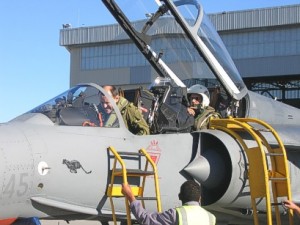 By far the most technologically advanced combat fighters in our skies, with the ability to swing between air-to-air, air-to-ground and reconnaissance at the flick of a switch, the South African Air Force (SAAF) Gripens are also outfitted with one of the most sophisticated human machine interfaces in operational fighters today.
By far the most technologically advanced combat fighters in our skies, with the ability to swing between air-to-air, air-to-ground and reconnaissance at the flick of a switch, the South African Air Force (SAAF) Gripens are also outfitted with one of the most sophisticated human machine interfaces in operational fighters today.
Compared to aerodynamically stable conventional aircraft that are ‘easy’ to fly, Gripens are designed to be aerodynamically unstable, with cockpit controls that are not mechanically linked to control surfaces to increase their tactical manoeuvrability. To help deal with the complexity, each Gripen is equipped with a fly-by-wire (FBW) control system that essentially ‘flies’ the aircraft by continually making corrections to stabilise it. This leaves the pilot free to concentrate on optimising the fighter’s flying qualities for the mission at hand.
The use of the FBW control system allows design engineers to optimise performance aspects during the design phase, while manufacturers can make small improvements throughout the life of the aircraft, as long as improvements in one area do not interfere with other areas.
Since 2004, CSIR engineers, SAAF flight test personnel and the Gripen Flight Test Centre (GFTC), have been instrumental in creating a knowledge base to fully understand and support the FBW technology, while assisting the SAAF in its interaction with the equipment manufacturer. The CSIR team developed test and analysis techniques to support the SAAF in evaluating the Gripen’s flying qualities
The collaboration has led to the development of a custom Gripen Flying Qualities Reference Specification that engineers use to ensure all flying qualities are tested in a systematic and complete way. The reference specification also gives guidance on the associated test and analysis techniques. Since 2010, the joint team made up of SAAF, CSIR and GFTC specialists have been testing the aircraft to create a baseline set of data to use for comparison when changes are made to the software or hardware of the aircraft, when new weapons are integrated, and to better understand how to utilise the aircraft optimally.
The CSIR supported the flying qualities component of the type acceptance process of the aircraft and continues to develop new test and analysis techniques used to optimise the utilisation of the aircraft. The flying qualities baselining process has resulted in a dataset used to monitor the impact of software and hardware changes as well as the integration of new stores on the aircraft. Spin-off technologies developed during this programme are used in areas such as unmanned aircraft system programmes and aerodynamic systems identification techniques used in characterising manned and unmanned aircraft.
Enquiries:
John Morgan
Telephone number: 012 841 2738
Email: JMorgan@csir.co.za
Enquiries:
Kimal Hiralall
Telephone number: 012 841 3187
Email: KHiralall@csir.co.za
